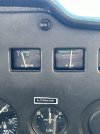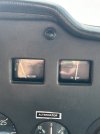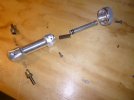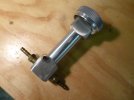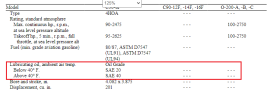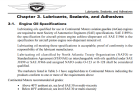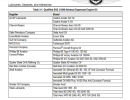406Propjunkie
Filing Flight Plan
- Joined
- Apr 24, 2023
- Messages
- 17
- Display Name
Display name:
406Propjunkie
I purchased a Cessna 150 with an o-200 late last year, the engine has 700ish hours since factory new from Continental but it has sat for quite a while.
We went ahead and replaced the accessory housing, oil pump gears, cover and oil pressure relief valve as it was having a hard time staying primed.
It’s flown probably 25 hours since I got it, runs like a top, all the cylinders are in the upper 70s and overall it’s been very reliable for me.
A few weeks ago on an 85 degree day I was doing touch and goes and on the 4th lap around the pattern I saw oil pressure indications that I didn’t like.
It was leaned for max rpm, and we were climbing out at VX to stay close to the airport.
At idle it would sit right below the red line, in flight at 1400rpm it would sit right above the red, and in cruise with full throttle it would sit just below the green.
I know in these small continentals, oil pressure issues are kind of a common thing.
I keep reading mixed opinions as to what to expect. Continental manual says 10psi min @ idle, 30psi in cruise. Every gray haired A&P I’ve talked to says “it’ll run past TBO don’t worry about it”
I’ve attached photos of the indications we were getting. I’m not thrilled about them.
We went ahead and replaced the accessory housing, oil pump gears, cover and oil pressure relief valve as it was having a hard time staying primed.
It’s flown probably 25 hours since I got it, runs like a top, all the cylinders are in the upper 70s and overall it’s been very reliable for me.
A few weeks ago on an 85 degree day I was doing touch and goes and on the 4th lap around the pattern I saw oil pressure indications that I didn’t like.
It was leaned for max rpm, and we were climbing out at VX to stay close to the airport.
At idle it would sit right below the red line, in flight at 1400rpm it would sit right above the red, and in cruise with full throttle it would sit just below the green.
I know in these small continentals, oil pressure issues are kind of a common thing.
I keep reading mixed opinions as to what to expect. Continental manual says 10psi min @ idle, 30psi in cruise. Every gray haired A&P I’ve talked to says “it’ll run past TBO don’t worry about it”
I’ve attached photos of the indications we were getting. I’m not thrilled about them.

